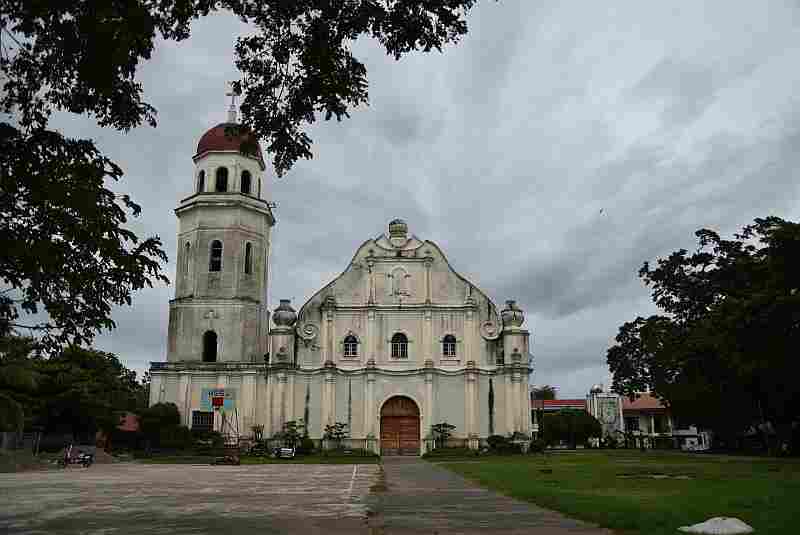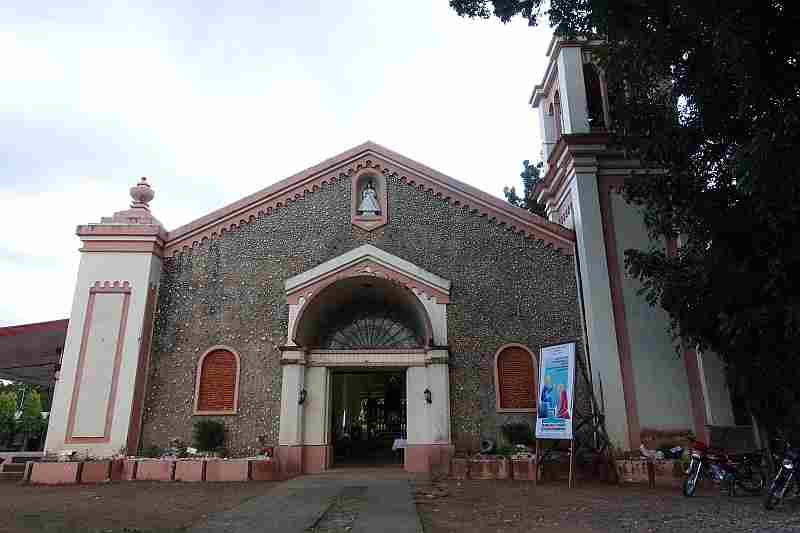Visita Iglesia Abra | A Holy Week Pilgrimage
Visita Iglesia Abra
As Easter approaches and we countdown to the end of the forty days of Lent and the beginning of Holy Week it has recently become the tradition to go out on Pilgrimages. The Visita Iglesia ( Spanish for “ to visit churches “ ) is a Holy Week tradition where believers visit and pray in a minimum of seven different churches around the Stations of the Cross.
One Day or Several Days
The Pilgrimage can be done in one day, usually on Maundy Thursday (which is the day before Good Friday, is a Christian holiday and regular non-working holiday in the Philippines.) if the churches are local, or it can be turned into a real Pilgrimage trip and take a few days.
There are different ways to complete the Visita Iglesia Pilgrimage Stations of the Cross. The Pilgrims can either visit fourteen churches for each of the fourteen Stations of the Cross, or pray at two stations of the Cross in seven different churches.
Suggested way to complete The Visita Iglesia
1. Visit Seven or Fourteen Roman Catholic churches.
2. The visits can be done either on the night of Maundy Thursday or on Good Friday as long as it is before the 3PM service.
3. Pilgrims on Maundy Thursday must seek and locate the Altar of Repose platform and respect the Lord’s presence. People may pray there or proceed to the Stations of the Cross.
4. Pilgrims on Good Friday may pray in front of the Stations of the Cross.
The Visita Iglesia Week
Travelling around during Holy Week has become so popular that tourists are now joining the thousands of Pilgrims and taking the chance to enjoy the festivities and visit old colonial churches and cathedrals on a Visita Iglesia Pilgrimage across the country.
Abra has its share of Spanish and American Era Churches too, which are worth visiting at any time of the year. But we will concentrate on just seven of them for the purpose of Visita Iglesia Abra week.

St.James the Elder Cathedral, Bangued
Originally built in 1722 and completed in 1807. The St.James the Elder Cathedral, Bangued was bombed by the Americans during WW2 leaving only the walls and five storey Bell Tower standing.
Reconstructed after the war with American Aid. It became a Cathedral in 1955.
The Holy Spirit Academy next door to the Cathedral was built in 1893.
The Parish Rectory on the left side of the Cathedral is worth checking out too. It was also destroyed by the American bombs and rebuilt after the Second World War.

Santa Catalina de Alejandria Parish Church, Tayum
The Santa Catalina de Alejandria Parish Church, better known as Tayum Church, is a 19th century Baroque church. Tayum Church was constructed by the Spanish in early 1800s by the Augustinians and was dedicated to St. Catherine of Alexandria.
Tayum Church was declared a National Cultural Treasure for its cultural significance and distinctive architecture by the National Commission for Culture and the Arts in 2001 and joined 25 others with this distinction in the Philippines.
One of the remarkable features of the church is the use of Palayok or Burnay jar motifs on the church’s facade. These jars are native to Abra and the Cordillera and pre-date Spanish colonization of the Philippines.
Palayok jars are short and sturdy, and are used in the fermenting of Bagoong (fish paste), Sugarcane Vinegar and Basi (sugarcane wine).
Palayok jars were brought to the region by Chinese traders and merchants who came by bamboo raft up the Abra River from Vigan in Ilocos Sur.

Our Lady of Peace Church, La Paz
In 1881 Fr. Francisco Ornía OSA started to build the present structure of stone and brick. The work was continued in 1888 by Fr. Paulino Fernandez OSA, and completed by Fr. Mariano García OSA who also built the convent.

Church of the Immaculate Conception, Pidigan
In 1820, Salvador Lago arrived in San Diego, west of the present town of Pidigan. Lago noted that further east was a wider plain and a richer forest where he could get plenty of materials for the construction of a church and a convent. The church was built in 1832 but was badly burned in 1881. It was rebuilt in 1886 and was finally completed in 1890. Every person male or female from the age 18 to 60 were made to contribute bricks and stones for the projects. All men were also were made to work nearly everyday without pay. The church fell into disrepair and was abandoned. A new church was built beside the old church in 1963. The old church was never demolished and remains an empty abandoned building. A closer look at the interior revealed that the altar and other interior decor remain. It’s a pity that the Church or LGU do not take care of their heritage and the church is slowly deteriorating further. The bell tower stands separated from the new Church and houses Two Bells dated 1845 and 1970.

Church of St. Narcissus, Bucay,
Bucay was established on October 29, 1846 and the first settlers were Itnegs. It became the first provincial capital of Abra when the military form of government was set up in May 1847. At the back of the present municipal hall is the centuries-old façade of the ruined Casa Real (Provincial Capitol Building). Across the town plaza, stands the centuries-old Catholic church, convent and learning school. The Church was rebuilt around 1900 and moved from its original position across the street and a bit to the north. There were instructions that as much of the old structure should be used whenever reconstruction was carried out. This would explain all those red bricks that can be seen.

St. Joseph Church, San Jose Sur, Manabo

Holy Cross Church, Lagangilang
In Lagangilang, the church is not situated beside the town plaza and Municipal Hall, as are most other churches in the Philippines.
The Church of the Holy Cross is located in Barangay Laang, which is a ten minute walk from the Plaza.
The Church built of red bricks was started in 1914 and finished in 1916. The Bell Tower was finished in 1931 and was renovated in 2010 with steel supports inserted to hang the Bells on.
The only parts of the original church remaining are the Bell Tower and the Apse. The original portal in the Bell Tower is now closed and a new entrance was made in the “new” centre portion of the church building.
Outside the Parish Office on the left is a Relief Map of Abra showing the location of every church in the Province, including Parish Churches and Barangay Chapels.
Please Note – All blog post photos on Silverbackbacker.com are of a lower quality to enable faster loading and save you data. If you would like to buy or license higher quality copies of any of the photographs you can email us at silverbackpackertravels@gmail.com
All photographs and content on this website remain the property of Silverbackpacker.com. Images may not be downloaded, copied, reproduced or used in any way without prior written consent.
Print purchases entitle the purchaser to the ownership of the image but not to the copyrights of the image which still remain with Silverbackpacker.com even after purchase.
Follow Silverbackpacker for more of his Travels
Facebook @silverbackpacker | Instagram @silverbackpacker
Twitter @silverbackpaker | Pinterest @silverbackpaker
Audere Est Facere – Silverbackpacker.com – To Dare is To Do
Affiliate Disclaimer: Links on this website may be affiliate links that could result in us receiving compensation when you purchase a product or service from that link. You do not pay any extra fees for these items. This helps us to keep this website going. Thank you for your support.
Disclaimer | Privacy Policy | All Rights Reserved


Hi,
Beautiful. Loving all of these churches. I like the custom too. When overseas I often find myself in lands not heavily influenced by Catholics, meaning I forget when Easter falls and the holiday passes without me barely knowing, save social media mentions. Cool to see this tradition.
Ryan